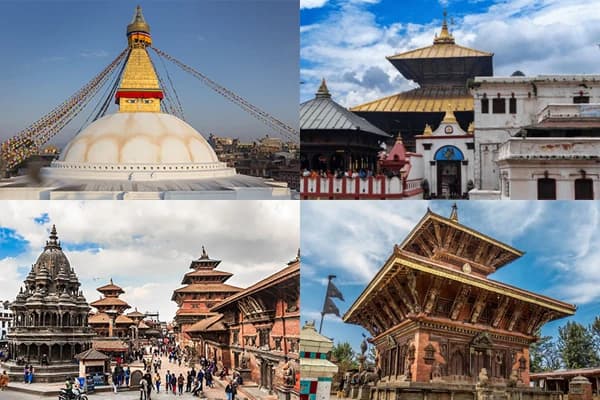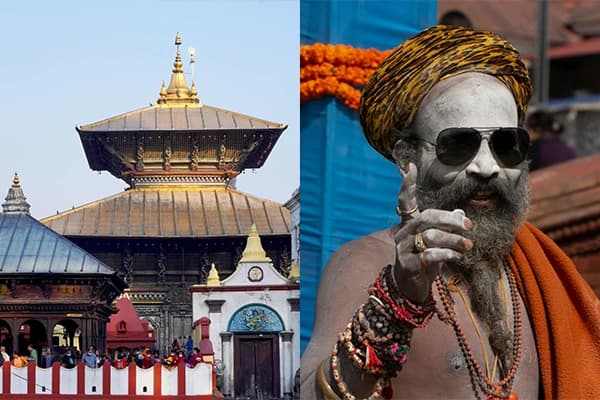Highlights of the Monsoon Trek
- Witness stunning views of Himalayan mountains range and peaks like the annapurna range, Mount Dhaulagiri, Mount Nilgiri, Mount Fishtail, etc.
- Witness the lush green forests, meadows, and colorfully bloomed wildflowers.
- Experience the vibrant culture, traditions, and way of life of the inhabitants at a higher altitude.
- Immerse yourself in the Jhinu Danda's natural hot springs.
- Explore the popular villages like Ghorepani and Ghandruk and get insights about the local traditions and customs.
- Fewer crowds, clear views of magnificent vistas, and discount rates for accommodation and transportation.
- Discover unique fresh-flowing waterfalls and streams.
- Witness the unique species of flora, like rhododendrons and Himalayan yew, and fauna, like musk deer, langur monkeys, snow leopards, and many more.
- A lifetime opportunity to see the vulnerable bird, the Spiny Babbler, which is found only in Nepal.
- Explore two base camps, Annapurna Base Camp and Machhapuchhre Base Camp, in a single trek.
Location and Altitude of the Annapurna Base Camp
The Annapurna Base Camp lies in the Annapurna Conservation Area of the Himalayas. It is located in central Nepal at a height of 4,130 meters from sea level. Annapurna Base Camp lies at the base of Annapurna i, the 10th highest mountain in the world at 8,091 meters above sea level. The base camp offers a panoramic view of mountains like Annapurna I (8,091 meters), Annapurna South (7,219 meters), Annapurna III (7,555 meters), Gangapurna (7,455 meters), and Hiunchuli (6,441 meters).
The Annapurna Base Camp is located at an elevation of 4,130 meters from sea level. The base camp is situated on a glacial plain within the Annapurna Conservation Area, where there is a diverse environment ranging from dense subtropical forests to high-altitude alpine zones.
Weather during Annapurna Base Camp Trek in monsoon season
The weather is warm and humid with occasional rainfall in the Annapurna region in June. You will experience an average temperature range from 10°C to 20°C during the day, while it drops to around 0°C to 5°C at night.
The occasional rainfall makes trails slippery and muddy, so you have to be well-prepared with appropriate footwear and clothing. The rainfall frequency and amount vary daily, and there is a possibility of heavy rainfall and thunderstorms. The lush green surroundings and fewer crowds make this month ideal for visiting the Annapurna Base Camp region.
There is slightly increased rainfall along with heavy rainfall and occasional thunderstorms in July. There is an average precipitation of around 500 mm, which sums up to 80 percent of annual rainfall; this makes it one of the wettest months of the year.
The temperature varies from 10 to 15 degrees Celsius during the day, while it drops from 5 to 10 degrees Celsius at night in the Annapurna Base Camp region. The temperature varies depending on factors like altitude, time of day, and weather conditions.
You will see stunning views of the surrounding mountains in the early morning or late afternoon. On clear days, you will see the breathtaking views of the Annapurna massif, including Annapurna South, Hiunchuli, and Machhapuchhre, throughout the day.
The month of August experiences heavy rainfall throughout the country. Due to heavy rainfall, the temperature starts falling as you move to higher altitudes. The humidity level is at its peak during this month, while the temperature varies from 10 degrees Celsius to 15 degrees Celsius.
You will experience bright mornings along with intermittent afternoon rainfall at lower altitude regions during the start of the hike.
Frequent and intense rainfall is experienced at higher altitudes near the Annapurna Base Camp region. Due to this, the path will be muddy and slippery, and the moist weather hinders the scenic views of the mountains.
Besides these obstacles, you will be rewarded with lush green vegetation, blooming flowers, and a less crowded and peaceful trail in the monsoon season.
Crowds during the Annapurna Base Camp Monsoon Trek
The annapurna base camp trek is considered the off-season in the monsoon season, which makes the trail empty or with fewer visitors. The unpredictable heavy rainfall and cloudy conditions make it more challenging to hike in the higher altitudes.
Due to this, the Annapurna region experiences fewer visitors in the monsoon season compared to the peak season. The crowd at the Annapurna Base Camp trails depends on various factors like weather conditions and travel restrictions.
However, if you’re planning to do the Annapurna Base Camp monsoon trek, there is a probability of crowds on the trail and in some resting stops and teahouses. You must be well-prepared with the necessary equipment to make your hike worthwhile. The smaller number of crowds in this region allows you to get a room without booking.
Festival in the Monsoon Season
The monsoon season offers festivals like rice plantation, Teej, Gai Jatra, and Janai Purnima. You will get the chance to immerse yourself in this festive atmosphere with locals living in the Annapurna Base Camp area.
Also known as the rice plantation festival, the Ropain festival is celebrated at the beginning of the rice planting season, and it usually falls in June. It is celebrated by people of rural areas whose main occupation is farming. Locals celebrate it by singing traditional songs, performing traditional dances like Deuda, and feasting. The farmers are very friendly and social, so you can talk with them and participate in the rice planting festival.
janai purnima is mostly celebrated in the Hindu community in Nepal. It is also known as Raksha Bandhan, and it falls on the full moon day of August. The men change their sacred thread called Janai, while the sisters tie a protection thread called Rakhi on the wrist of their brother. They celebrate by eating Kwati, which is a mixture of a variety of lentils, chickpeas, and other bean items along with other veg and non-veg dishes.
gai jatra is a festival of cows, and locals parade like cows throughout the streets. There is a belief that cows help the departed souls to reach heaven, and people parade by decorating their cows throughout the city. It falls in August and is celebrated in Newari communities all around the country.
teej is another festival that is celebrated in the monsoon season. It usually falls in August and is popular as the festival for women. The married woman fasts all day for the long life of their husband and breaks their fast by drinking water and food from their husband’s hand.
Unmarried women also celebrate it by decorating themselves and fasting for their future husband. All the married and unmarried women gather in the temple of Lord Shiva and spend the rest of their day singing and dancing in the traditional attires.
Tips for Annapurna Base Camp in Monsoon Season
The monsoon season is challenging, and hiking to the Annapurna Base Camp in this season is very hard and requires more energy and willpower. The Annapurna Base Camp trails pass through dense forests, wetlands, and rough terrain, so you need to wear fast-drying layered clothes.
Your backpack should be lightweight; otherwise, it will create difficulty during the hike. You must bring a lightweight backpack, raincoat, waterproof pants, and durable hiking boots. The moist and damp environment harbors many parasites like leeches and insects like bugs and mosquitoes.
You need to begin your trek early in the morning so you will avoid heavy rainfall, which usually falls in the late evening. This will provide you with a clear view of the Himalayas of the Annapurna region. You need to drink plenty of water to avoid heat exhaustion. You must drink more than 3 liters of water per day.
Without a local guide, you can't enter the Annapurna region, so hire a government-certified local guide for your trip. The local guide will help you navigate the trail as well as provide cultural and historical information while ensuring your safety.
You must bring enough cash, as there are no ATMs on the Annapurna Base Camp trail. The hotels and lodges at higher altitudes do not accept any online transactions like credit cards and phone pay services.
Moreover, you need to have a trekking permit to enter the Annapurna conservation area. Your trekking agency will get you this trekking permit from the Nepal Tourism Board.
The Annapurna base camp takes you to an altitude of 4,130 meters; there is a chance of suffering from altitude sickness. You need to drink enough water and acclimatize properly to avoid altitude sickness. You need to bring Diamox in case you suffer from extreme altitude sickness.
The Annapurna Base Camp trail consists of many pilgrimage sites, so you need to respect the culture and dress properly while visiting these places. You need to ask for permission before taking pictures with locals and must be mindful of your actions.
Diversion of the route of Annapurna Base Camp
The Annapurna Base Camp journey starts as soon as you take a flight from Kathmandu to Pokhara. Pokhara is also known as the Capital of Tourism, which is a unique tourist destination for its stunning lake, scenic views of the Himalayas, and adventure activities like paragliding and zip-lining. Then, you will reach Nayapul via a private jeep, which is the starting point of the trek. On the first day, you will hike to Tikhedhunga, passing along the lush paddy field and traditional settlements.
You will pass through several suspension bridges, rivers, rivulets, streams, and waterfalls. You will spend a night at Tikhedhunga, and the next day begins with a hike in a winding stairway to Ulleri. Ulleri gives a scenic view of the surrounding mountains. After a short stop to view the Himalayas, you will reach Ghorepani. Ghorepani is located at an altitude of 2,874 meters above sea level, and you can see the majestic view of the Dhaulagiri and Annapurna mountains.
After spending a night in Ghorepani, you will wake up early and hike up to Poon Hill for sightseeing and view peaks like Mount Machhapuchhre. You will descend and hike to Tadapani, which lies at an altitude of 2,630 meters. Then, you will hike to Chhomrong village and Dovan village. You have to pass through the Modi Khola River and witness the beauty of the Annapurna South and Hiunchuli peaks at Chhomrong. Dovan is known for its lush forests and small streams at an altitude of 2,500 meters.
We will head to Machhapuchhre Base Camp, which lies at an elevation of 3700 meters. Then, you will reach the Annapurna Base Camp, which is situated at an altitude of 4,130 meters. You will pass through majestic mountains, lush forests, and streams until you reach the base camp.
- Kali Gandaki Valley to Anapurna Base Camp
The diversion to Annapurna Base Camp starts after spending a night in the Ghorepani Poon Hill. You will head forward through the deepest gorge in the world, Kali Gandaki Valley. Kali Gandaki Valley offers a delightful view of the Dhaulagiri and Annapurna mountain ranges. You will trek while experiencing the unique culture and traditions of the Gurung and Magar settlements.
You will reach Annapurna Base Camp, which lies at an altitude of 4,130 meters. You will witness Modi Khola Valley, Annapurna South, Hiunchuli, Annapurna I, Gangapurna, and Machhapuchhre peaks.
Flora and Fauna of the Annapurna Base Camp trail
The Annapurna Base Camp trails offer a wide variety of flora and fauna. The stunning terrain landscapes, rugged mountains, and diverse vegetation are the popularity of the Annapurna region. The lush greenery and blooming flowers add beauty to the tiring trekking journey. There are a variety of flowering plants, like pink, red, and white rhododendrons.
It forms a canopy over the trails while creating a magical atmosphere in the forest. It offers a habitat for an endangered plant species, the Himalayan yew, which is a medicinal plant. The forest is predominantly composed of trees like oak, pine, cedar, bamboo, and ferns. You will encounter bamboo forests in the lower region of the trail, where you can receive refreshing air during the hot and humid climate.
In Nepal, bamboo shoots are used as a side dish, and most of the teahouses and lodges serve them in your dish. Most of the Annapurna region forests are surrounded by oak trees, and they are used by locals for their daily life, like fuel and timber. The monsoon rains harbor many wild ferns, and fiddlehead ferns, also known as ningro, are used as a vegetable and pickle by locals.
The Annapurna region offers a habitat for a wide range of wildlife, like birds, mammals, reptiles, and amphibians. It is perfect for wildlife enthusiasts, as you may see most of the endangered wildlife species in this region, so it is conserved under the Annapurna Conservation Area.
You can see wildlife like Himalayan Tahr, musk deer, langur monkeys, red pandas, and the elusive snow leopard while hiking in this region. The Annapurna Conservation Area protects more than 450 species of birds, which makes it a paradise for birdwatchers.
You can stop for some time and take a glance at birds like the Himalayan Monal, the Spiny Babbler, and the Eurasian Eagle-Owl with the help of binoculars. Besides this, you will see different species of snakes, lizards, frogs, and fish species in the rivers and ponds of the region.
Note: The Annapurna Conservation Area Project was established in 1986. It helps to safeguard and protect the unique biodiversity of the Annapurna region, including other accomplishments like mitigating deforestation, promoting sustainable tourism, and enhancing the livelihoods of the local communities.
Merits & Demerits of Annapurna Base Camp in Monsoon season
The Annapurna Base Camp monsoon trek has its own merits and demerits. The merits of hiking to the Annapurna Base Camp region in monsoon season are listed below:
- There are fewer tourists on the trail so you can enjoy the beauty of nature without any rush. The lower demand in hotels and tea houses offers discount rates for accommodation and food.
- The heavy rainfall makes the surrounding environment lush green. The fully bloomed forest and field with colorful flowers and vegetation. Fully flowing view of the waterfall and river throughout the journey.
- Lower costs in accommodation and transportation while enjoying the scenic region without breaking the bank.
The demerits of Annapurna Base camp monsoon trekking are listed below:
- Heavy rainfall makes the trail muddy followed by numerous challenges and difficulties. Proper trekking gear like raincoats, waterproof hiking boots, and backpack covers make the baggage overload.
- Hiking in highly humid areas causes discomfort and perspiration as the atmosphere is thick and moist. Heat exhaustion may occur so you need to stay hydrated.
- There are obstructed views of mountains due to clouds and mist and you will not get the chance to observe the panoramic views of the Annapurna mountain range.
Conclusion
In conclusion, the Annapurna Base Camp monsoon trek can be adventurous and worthwhile if you have enough preparation and good practices. You will complete this trek while witnessing lush landscapes, majestic views of Mountains, diverse wildlife, vegetation, and a rugged trekking trail.
Even though you may suffer from altitude sickness, insect bites, and leeches during your journey the natural beauty and highest peaks will make your adventure an awe-inspiring experience. With enough preparation and a good trekking agency, you can enjoy your hike to the Annapurna Base Camp region in the monsoon season like that in the peak season.





